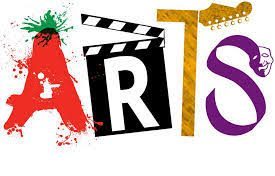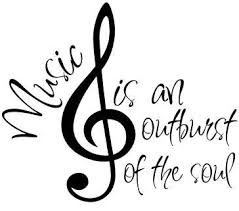This week we began our learning for music, an area I haven’t had a lot of experience with of recent. Leading to not much confidence in this topic area, which I put down to my earliest experiences in primary, where I didn’t get chosen for doing things like the violin. However, I do want to learn key skills to include music in lessons and hopefully make children feel like they can play music even if they may not believe in themselves like myself at their age.
To start with it was vital we were opened up to why music matters. Identifying music in how it makes us feel and how we connect with it. Pondering the way, it makes us feel inside through our listening. The emotions and connections made can create and open up keen interests in areas of music. Seeing the different varieties of how music relates to us can aid the development of being creative in creating our own pieces but also in our cross-curricular work.
Linking to the way that listening to music can create different images and ideas within our minds, leading to writing a story or visualising images. Using this piece from fantasia, we created our own creative writings, which even within my group of five we had different ideas. I enjoyed doing this and letting my mind be evaporated into the piece of music.
“Children and young people will develop, enhance and apply skills gained in the expressive arts in a very broad range of activities…” (Education Scotland, Date)
Putting our ideas together we added the visuals of a storyboard, bringing to life a piece of music, we had only just heard. As well as using tools in collaborative workings and also being enabled through literacy and visual arts.
Music is a stimulus, to other areas of the curriculum, but also the power of our minds. Music can be enjoyed through playing but more so through listening and engaging our thoughts.
“As music and language are cultural products, it’s important to let students speak the truth of their native musical and literary cultures…” (Glauser, H.A., 2019)
This week in drama was our final week, and I can see the transitions through emotions and thoughts I’ve made. From an environment I haven’t had experience with to an area I feel I can value in multiple ways of my classroom. This final input led me to be in the children’s minds as our peers micro-taught us. Being in their shoes last week I could relate to the feelings, and I wanted to be able to engage with the tasks they set as best I could so they could explore their skillset in teaching drama.
Being able to embody myself in a multitude of emotions and connecting with the scenes. As well as exploring deeper the conventions we have done in the inputs we have had.
“…we need to extend our own experience of creative and artistic activity and be willing to step inside such contexts with our learners, demonstrating our own imaginative engagement in the process.” (Grainger, 2003, P. 46)
Microteaching can aid in creative confidence as well as enrich our competence within educating children on drama.
Finally, we explored a new convention of role on the wall this week, explored the way drama doesn’t have to be a specific part of the day it can be incorporated into multiple topics of the curriculum. Here we can see the connections and individual can make to a character or person. They can create a picture of words on how the person is seen or judged by others and how they feel on the inside. As Baldwin explored how doing drama in classrooms can enable connections to be made between the picture’s children see and the feelings that would have been felt.

These “imaging experiences are none the less felt and integrated cognitive, affective and aesthetic experiences.” (Baldwin, 2012)
With this, you can create a future picture and to how these may have changed over time or through a specific event occurring.
I can respond to the experience of drama by discussing my thoughts and feelings. I can give and accept constructive comments on my own and others’ work.
EXA 0-15a / EXA 1-15a / EXA 2-15a / EXA 3-15a (Education Scotland,
Through these sessions, I can link to the feelings and emotions the arts can bring through our engagement. Being able to see how this resonates on the inside to how they are portrayed on the outside. Through musical sounds, words out of a mouth or images on a storyboard, individuals are able to create a picture of emotions in the mind and reiterate these in their own form.
References
Scottish Government (n.d.) Curriculum for excellence: expressive arts. Experiences and Outcomes[Online] available: https://education.gov.scot/Documents/expressive-arts-eo.pdf [accessed on: 12/10/2019]
Teresa Grainger (2003) Creative teachers and the language arts: Possibilities and potential, Education 3-13: International Journal of Primary, Elementary and Early Years Education, 31:1, 43-47
Glauser, A.H., (2019) Why Music [online] available: https://www.kent.edu/tags/hugh-glauser-school-music?page=3 [accessed: 12/10/2019]
Baldwin, P (2012) With Drama in Mind: Real learning in Imagined worlds continuum: London


